Animal Care Center(ACC), 2024
Help Volunteers easily connect with ACC, access detailed volunteering information, and engage with the animals they’ll be caring for
.png)
BACKGROUND
Animal Care Centers of NYC (ACC) is the city’s only open-admission animal shelter, serving all five boroughs. They take in thousands of animals annually, providing shelter, medical care, and adoption services. ACC plays a critical role in animal welfare and public service, yet their web experience lacks emotional connection and clear access to key services like volunteering, prompting the need for a user-centered redesign.
The goal is to create a more intuitive experience that provides detailed information on the dogs in the shelter, including behavior and handling guidelines. This will help volunteers approach each dog with the appropriate knowledge and techniques, ensuring both their safety and the well-being of the animals.
Based on the background, website analysis, and user research, we listed out the goals
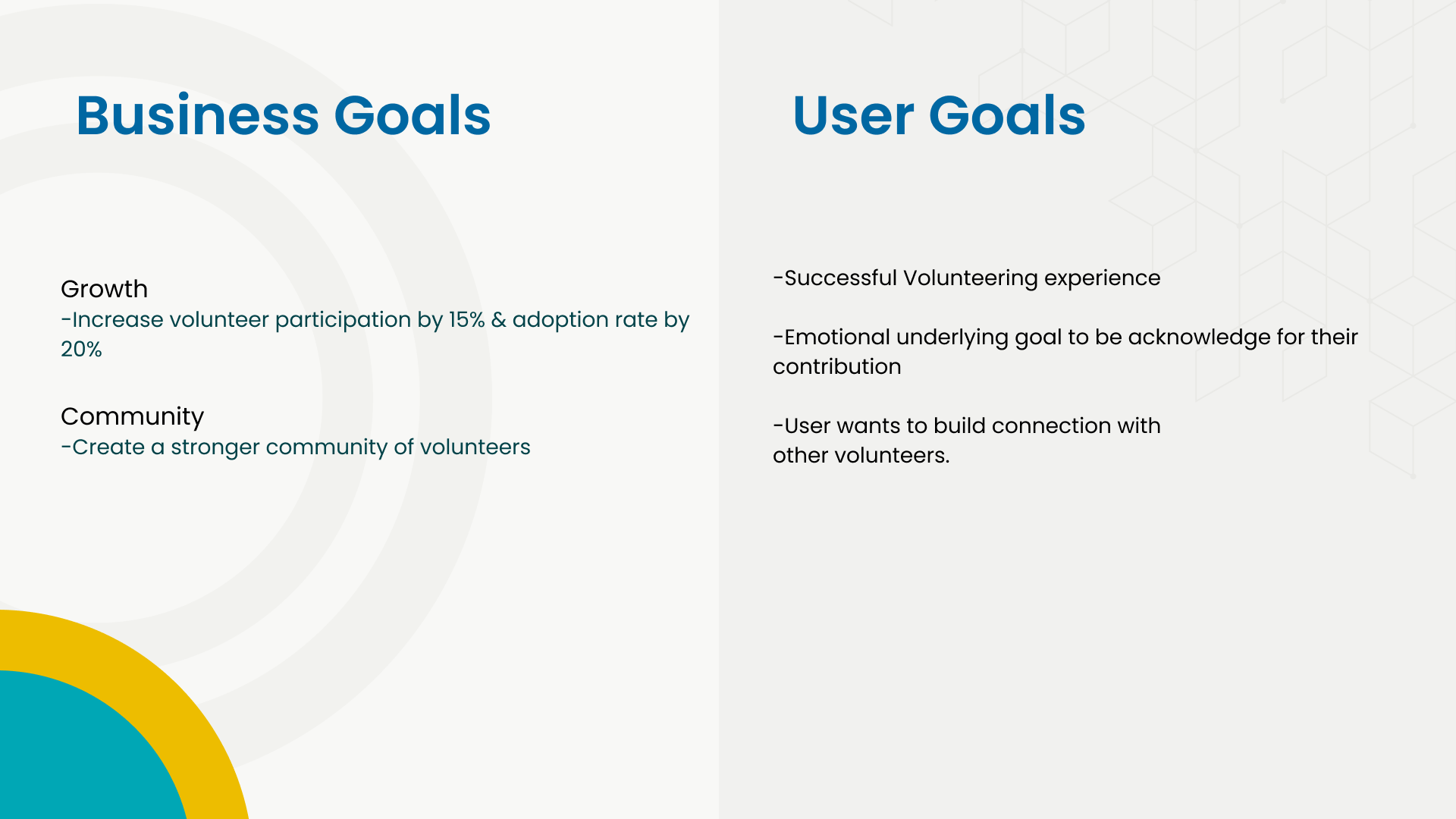
DESIGN PROCESS OVERVIEW
We began by exploring existing animal care websites to understand volunteer needs and gaps in the user experience. A key issue emerged: volunteers lacked access to animal behavior and handling information before signing up. In response, we created wireframes to explore navigation and layout options, leading to high-fidelity mockups designed for clarity, ease of use, and web accessibility.

USER RESEARCH
The goal of the user research was to understand the needs and pain points of Animal Care Center (ACC) volunteers when accessing information about shelter dogs. To gather insights, I conducted interviews with current volunteers, and distributed surveys to understand their experiences and frustrations with the existing platform. Additionally, I performed a competitive analysis to explore industry standards for similar platforms.
Competetive Analysis & Key Identification

- ACC operates through all 5 boroughs which makes it more accessible to NYC residents.
- Competitors usually limit intake or need a wait list to pet surrender. However, with ACC it offers open admission and has great accessibility.
USER PERSONA
Based on the research and data, we created a persona 'Jake' to ensure that the design decisions were centered around the user needs, behaviors, and goals of the target users & not assumptions.
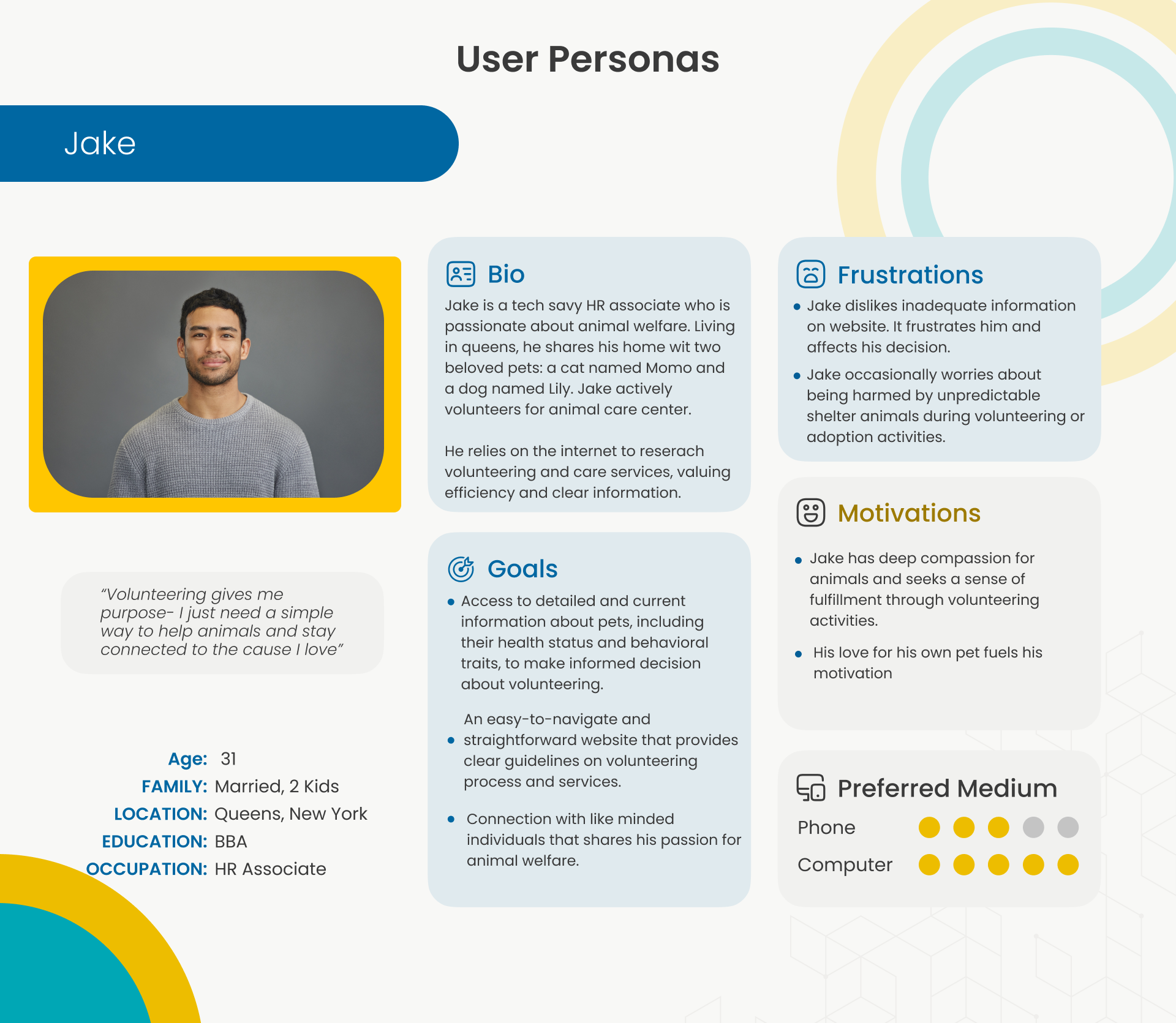
PROBLEM DISCOVERY
While analyzing the data from our interview and competetive research, we found several website issues:
- Unintuitive
User fail to navigate through the website to reach their goal of volunteering. -
Uninformative
ACC doesn’t provide a way for user to connect with them often having a user leave the website without any conversion - Disconnection
Lack of emotional engagement due to ACCs primary focus on the newly furnished ACC borough on the website rather than emphasis on volunteering needs.
STORYBOARD
Next, we created a storyboard to viaually map out how Jake would interact with ACC and their service in his environment. This process helped us identify the painpoints and moments of confusion in a user journey.
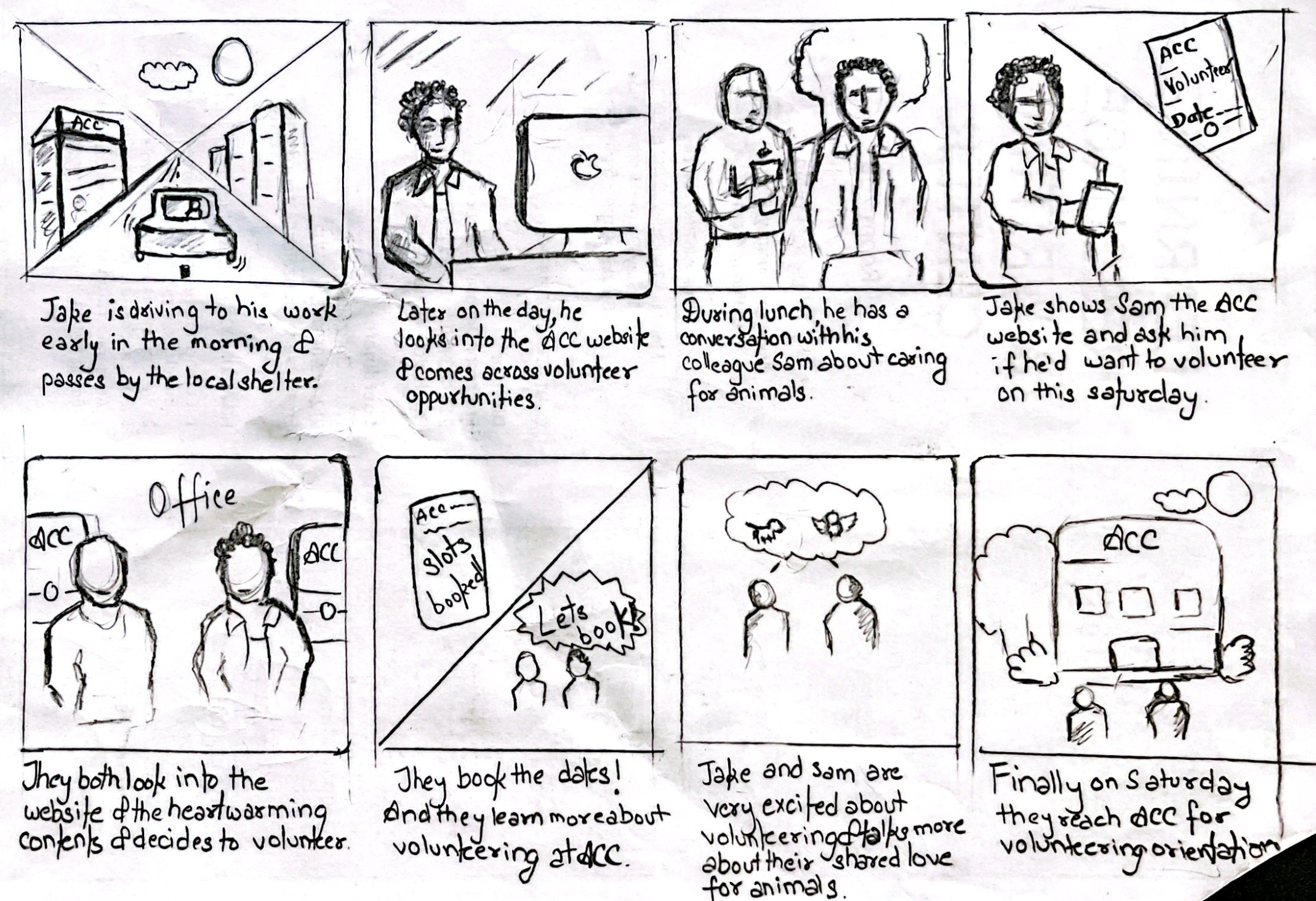
FLOWCHART
Based on the insights from our user persona and storyboard, we created a user flowchart to map out the key steps a volunteer would take while navigating the Animal Care Center website. This helped us visualize the ideal path from discovering the platform to completing actions like learning about animal behavior and signing up to volunteer. The flowchart ensured our design stayed aligned with user needs and supported a smooth, intuitive experience.
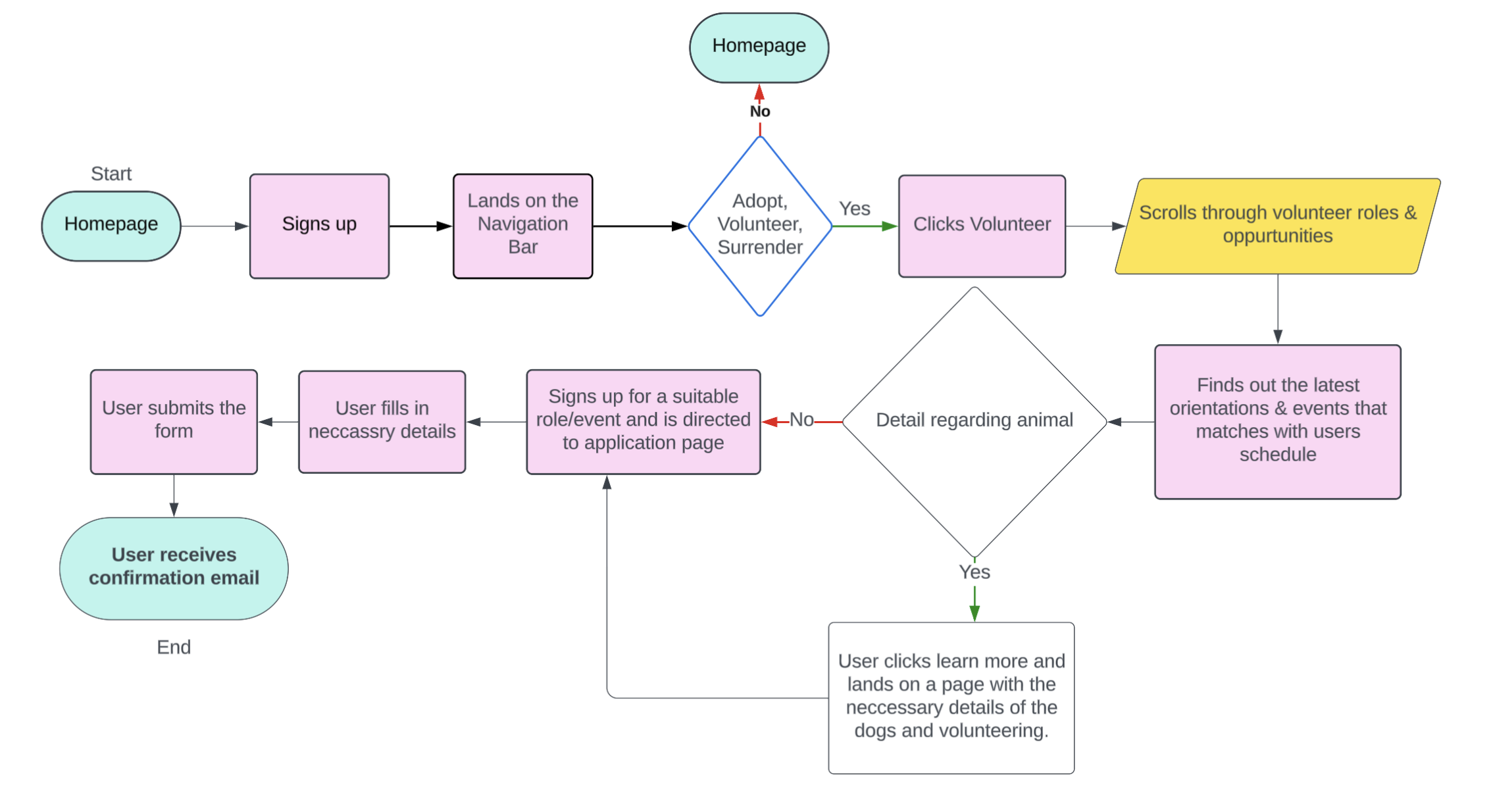
SOLUTION
After defining the user flow, I translated the journey into low-fidelity wireframes to begin shaping the structure and layout of key screens. Heuristic principles like clarity and consistency were considered to ensure the design was intuitive from the start.
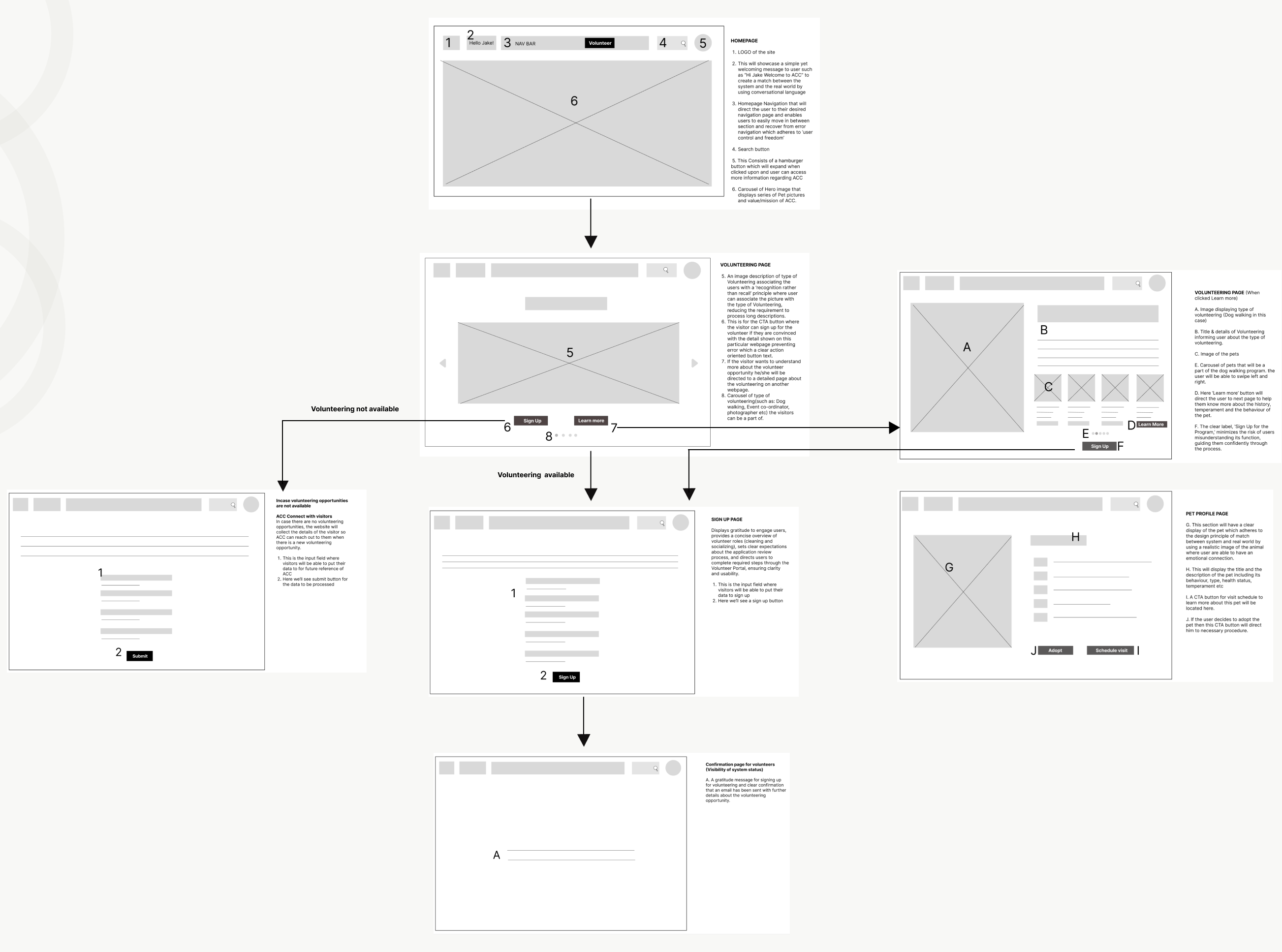
MID-HIGH FIDELITY PROTOTYPE
We created a mid-to-high fidelity prototype to showcase the core layout, interactions, and user journey. The main goal was to provide volunteers with easier access to pet behavior and handling information. While the prototype isn't fully polished, it serves as a strong foundation for future usability testing and refinement based on real user feedback.
Volunteering Page
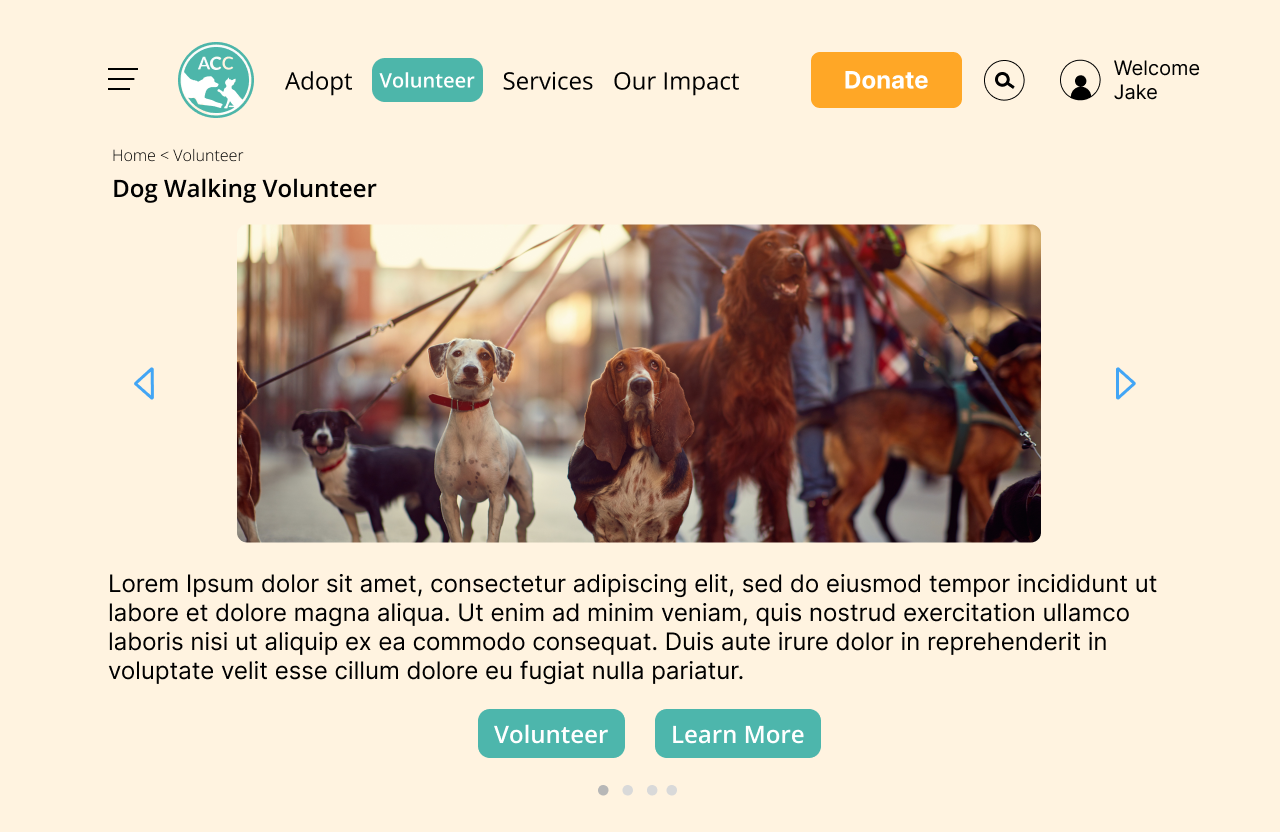
Volunteering Detail Page
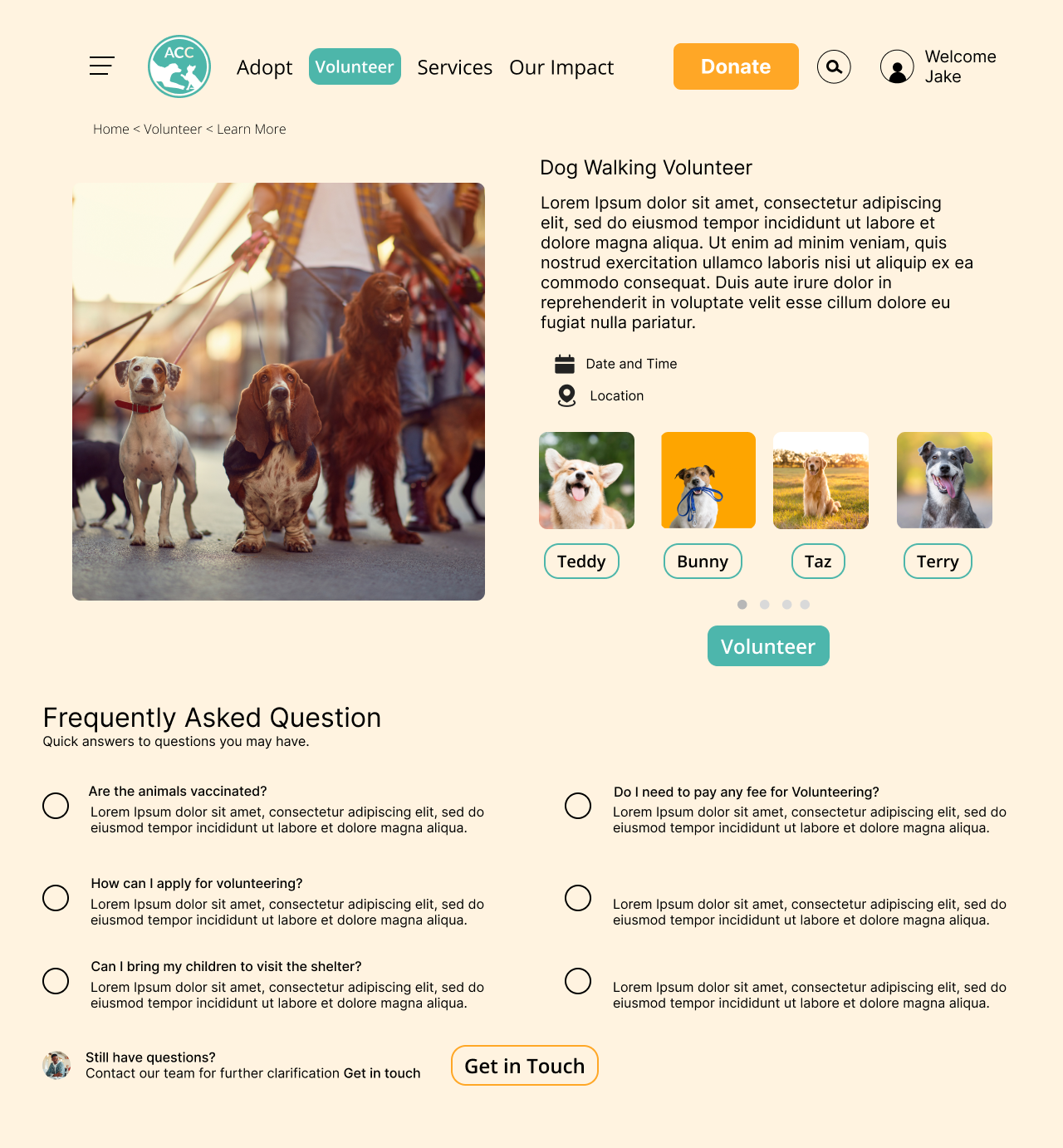
Pet Detail Page
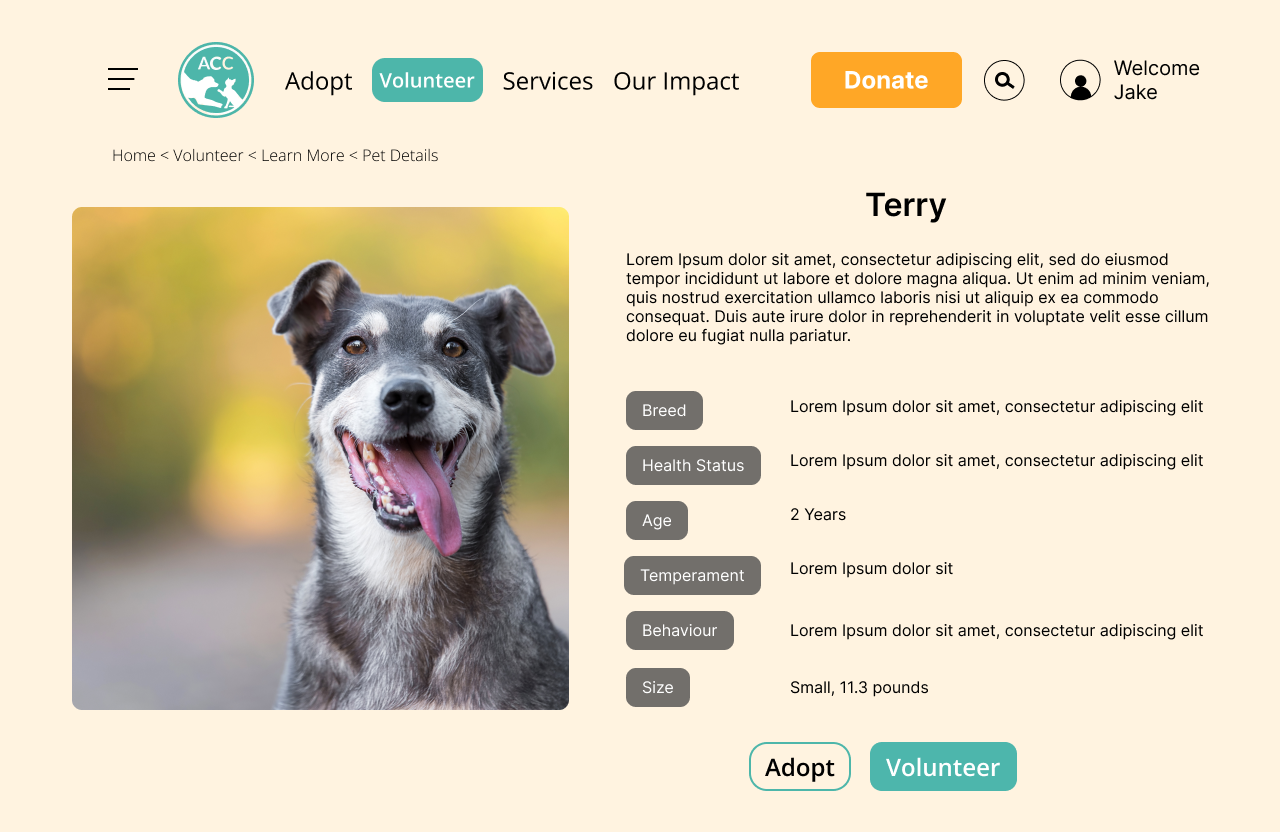
NEXT STEPS
Conduct Usability Testing
Analyze Test Result
Refine The Prototype
Develop High-Fidelity Visuals
CONCLUSION
This project offered an insightful opportunity to design a more supportive and informative website experience for Animal Care Center volunteers. By understanding user needs, identifying key pain points, and designing with usability principles in mind, we laid the groundwork for a more accessible and intuitive platform.
While the prototype remains a work in progress, future usability testing will guide the next iteration and help us refine the experience further. Overall, this case study reinforced the importance of research-driven design and thoughtful problem-solving in creating meaningful user experiences.